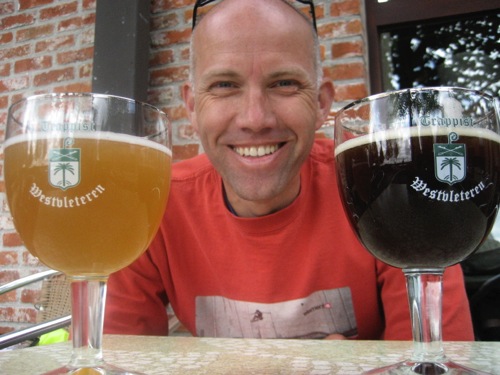Frans Mulder receives grant from Danish Innovation Fund

Danish Barley to secure world-class beer
Better knowledge about genetics and metabolites should provide a leading edge to Danish malting barley on the European market. The Danish Innovation Fund invests 3 million dkk (~ 400 k€) in the development of novel methods to predict and improve malting quality in less time than today. The goal is that brewers can produce the best quality beer.
A good beer requires good malt. Malt is made from barley seeds, and malt quality varies as a result of genetic and environmental factors. The quality of malt is difficult and expensive to measure, which makes the development of new barley varieties time consuming and cost intensive.
To support the improvement of barley crops, the company Nordic Seed joined forces with two institutes at Aarhus University, which possess expertise in genetics and NMR spectroscopy, respectively. The purpose is to develop a mathematical model that can effectively identify barley varieties that demonstrate high malting quality, and that are robust to variations in weather and soil conditions.
Researchers at the interdisciplinary Nanoscience Center (iNANO) and Institute for Chemistry at Aarhus University possess extensive knowledge about the development and application of NMR spectroscopy. This technique can simultaneously identify and quantify many small molecules that barley seeds contain, and measure the difference in conversion of their cellular contents. The latter can subsequently be correlated to changes in genetic and environmental factors. The expectation with the project is that the partnership can, through the combined knowledge of DNA and metabolite profiles, environmental parameters and the eventual measurement of malting quality, predict the decisive factors that positively influence product value. This will make it possible to select the optimal varieties to grow at an earlier stage than what is possible at present.
'NMR spectroscopy can take a fingerprint of the molecules that are present in a sample, and how much of each of these there is in the sample. This is used in biomedicine for analysis of blood and urine samples, and can also be applied to, for example, milk and grain to improve food quality and safety', says associate professor Frans Mulder, who is responsible for the NMR measurements in the project. 'Besides, this project unites two of my favorite pastimes, good science and fine beer.'
links:
Contact details:
Nordic Seed, 8300 Odder, Ahmed Jahoor, PhD, Breeding Manager, +45 29134757
Aarhus University, Center for Quantitative Genetics and Genomics, Just Jensen, Professor, +45 40821680
Aarhus University, Laboratory for Biomolecular NMR Spectroscopy, Frans Mulder, Associate Professor +45 51447344